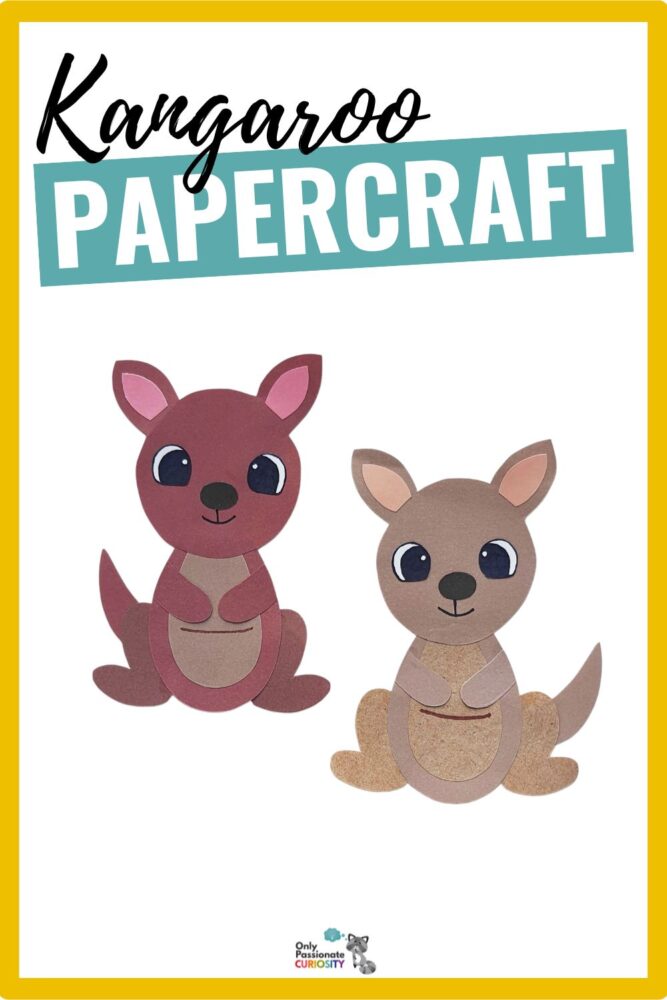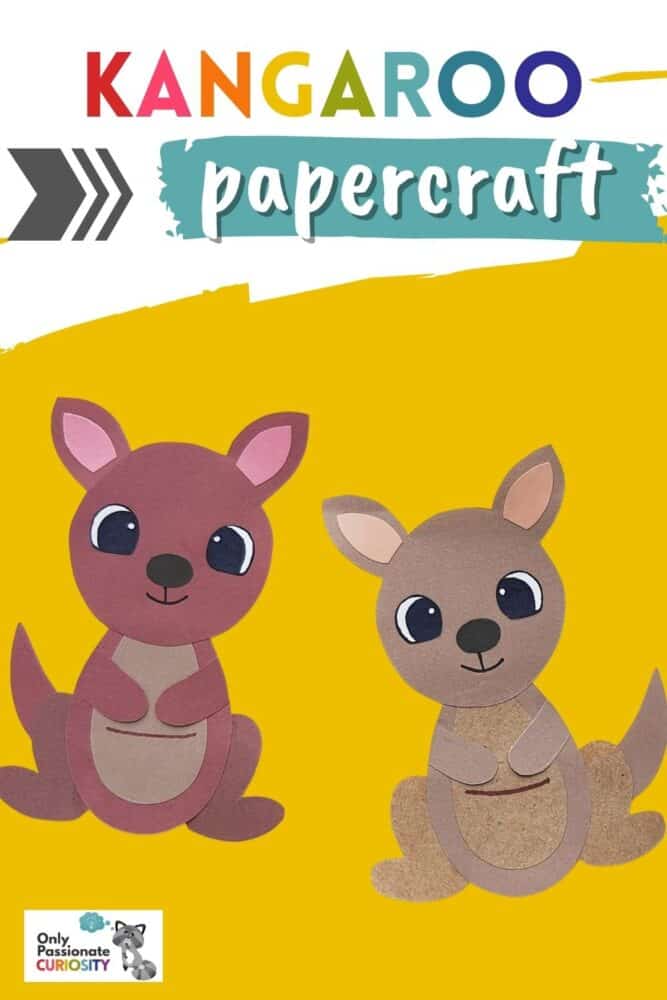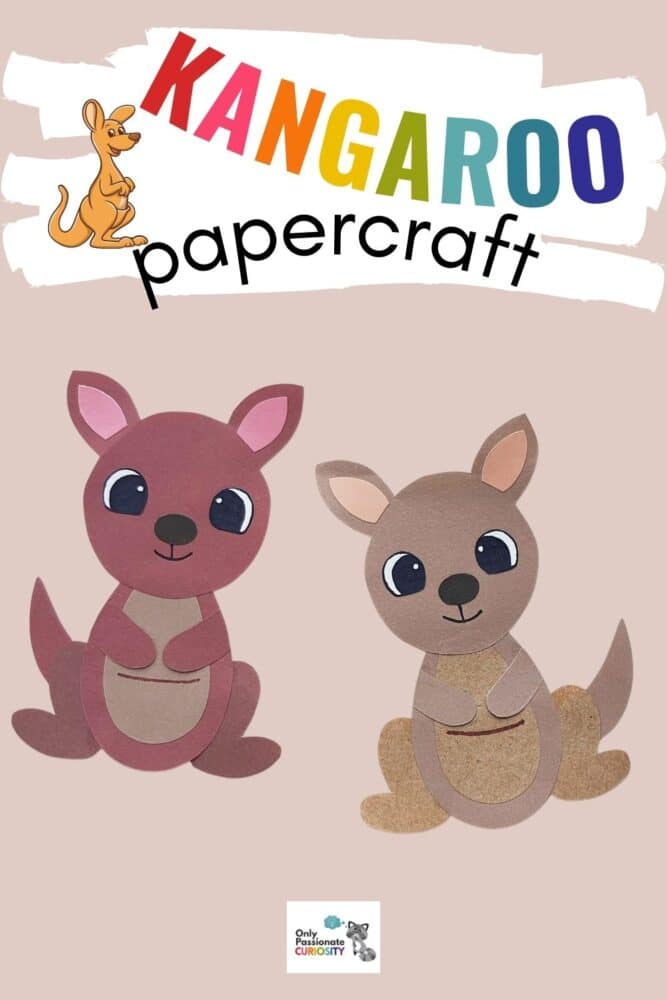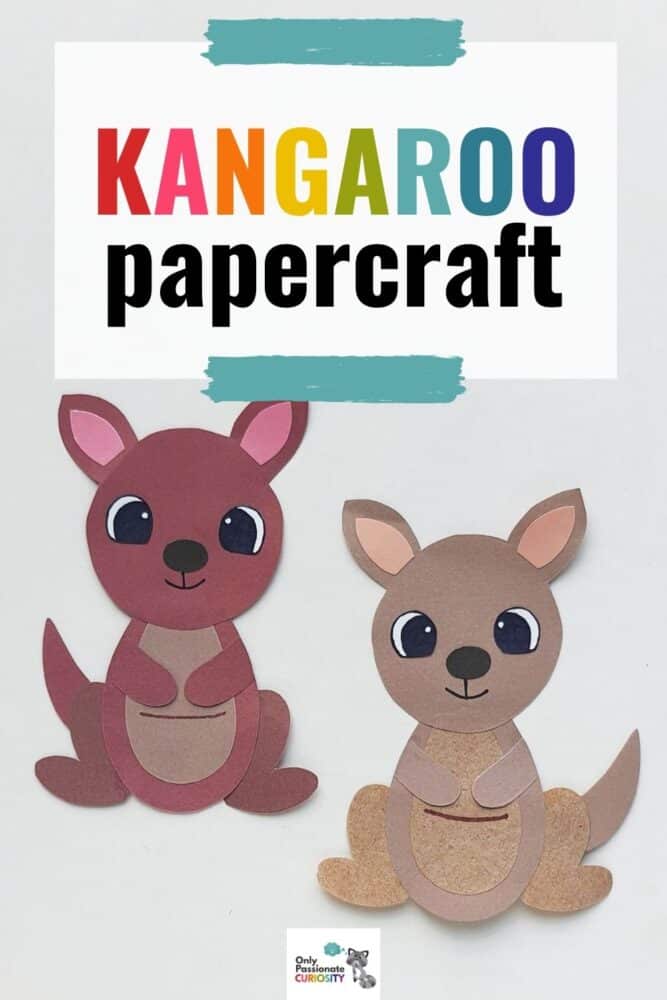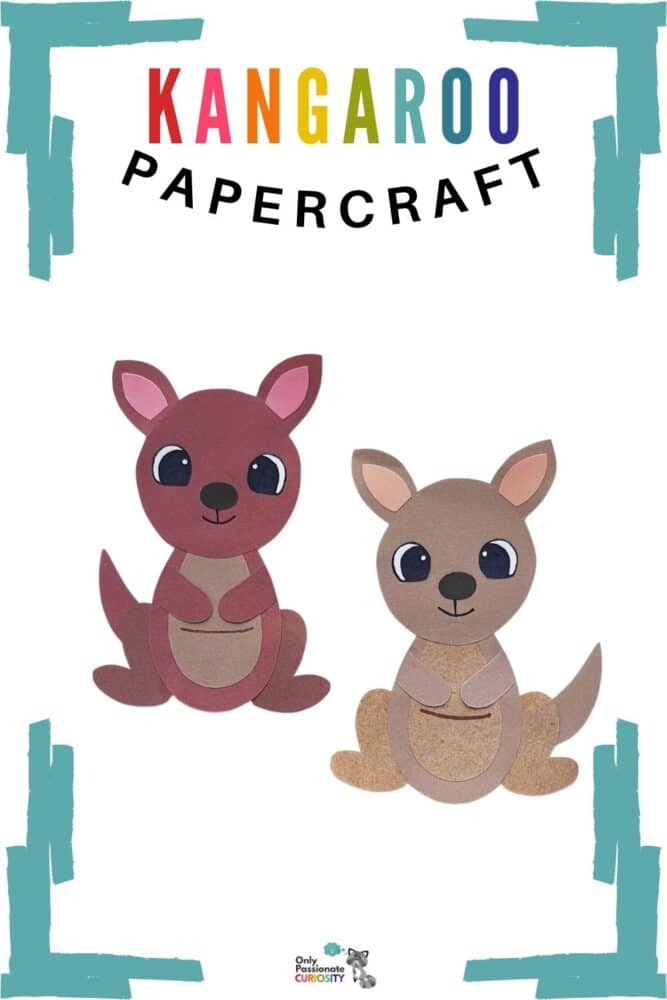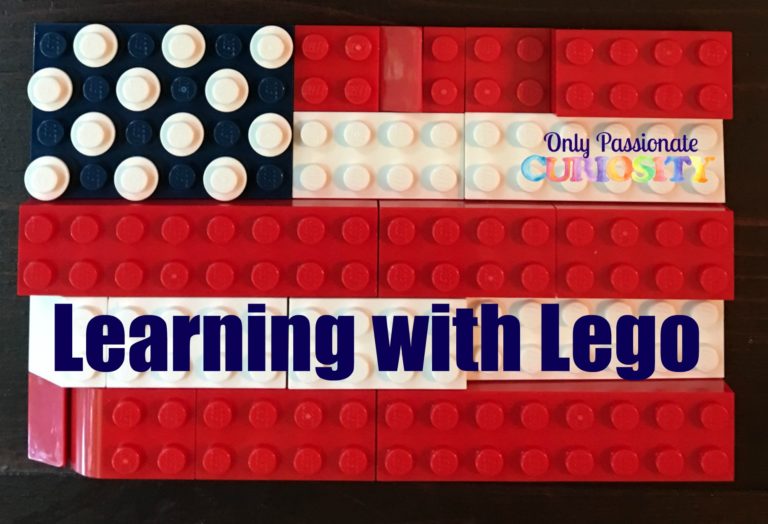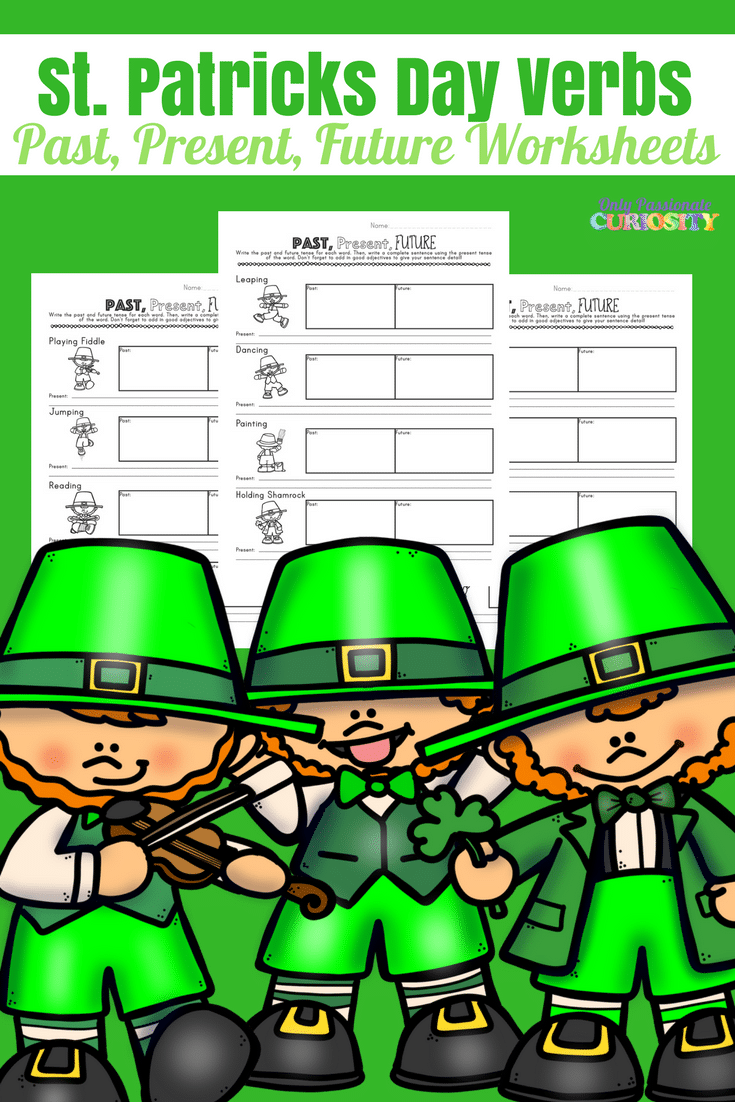Kangaroo Papercraft
Introducing a fun kangaroo papercraft for kids!
Get ready to hop into a world of creativity and fun with this exciting craft project. Designed specifically for little adventurers, this easy-to-make papercraft will bring the Australian outback to your fingertips. With just a few basic materials and simple instructions, children can create their very own adorable kangaroo, complete with a pouch and bouncy legs.
This kangaroo papercraft not only sparks imagination but also develops fine motor skills and encourages problem-solving. Join us on this wild crafting journey as we trace, cut, and glue our way to a charming kangaroo friend. Let’s gather our supplies and embark on an Australian-inspired crafting adventure together!
10 Facts About Kangaroos
Pair this cute activity with some facts about kangaroos.
- Kangaroos are marsupials, which means they have a pouch in which they carry and nurse their young ones, called joeys.
- They are native to Australia and can be found in various habitats like forests, grasslands, and deserts.
- Kangaroos are well-known for their ability to hop. They have strong hind legs and can cover large distances in a single hop. They can move at up to 40 miles per hour (64 kilometers per hour).
- Male kangaroos are called boomers, while females are referred to as flyers or jills, and baby kangaroos are called joeys.
- Kangaroos have a unique way of getting around when they are not hopping. They use their strong tails as a balance and support while moving and standing.
- They are herbivores, which means they eat plants. Kangaroos primarily feed on grass, leaves, and shrubs.
- Kangaroos live in groups called mobs or troops. These groups can range from just a few individuals to over 50 kangaroos.
- Kangaroos have a specialized digestive system that allows them to extract more nutrients from their food. They have a complex fermentation process that takes place in their stomachs to break down tough plant materials.
- Kangaroos have excellent hearing and can rotate their ears independently to detect sounds from different directions. This helps them stay alert to potential predators.
- Kangaroos can go long periods without drinking water. They can obtain most of their water needs from the plants they eat.
List of Supplies for Kangaroo Papercraft:
- Colored craft papers
- Sharpie
- Craft glue
- Pencil
- Scissors
- Kangaroo Papercraft Template (opens in new window)
Instructions for Kangaroo Papercraft:
Step 1:
Select 2 or 3 different shades of brown craft paper. Trace the head, lower body pattern, tail, and upper legs (or arms) on a medium shade of brown paper. Then trace the belly and lower legs on the light shade of brown paper. Lastly, trace the inner ears on pink and the nose on black paper. Carefully cut out the traced patterns.
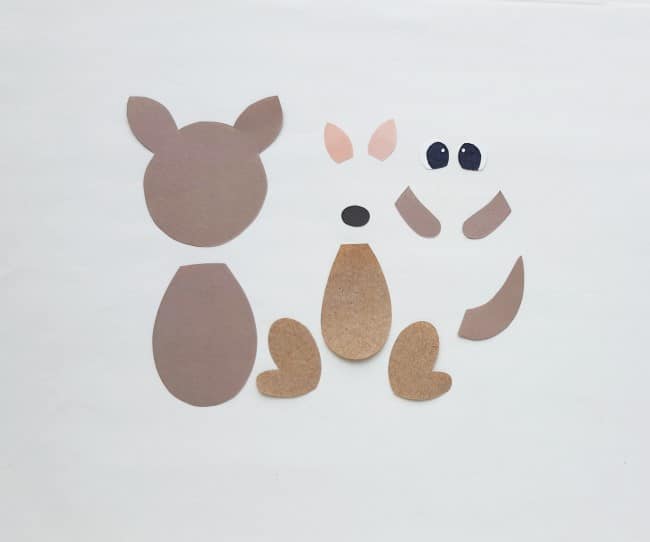
Step 2:
Glue the inner ear cut-outs onto the ear parts of the head cut-out and then glue the belly cut-out onto the lower body cut-out. You can also try using embossed paper for the belly to add some texture to the kangaroo papercraft.
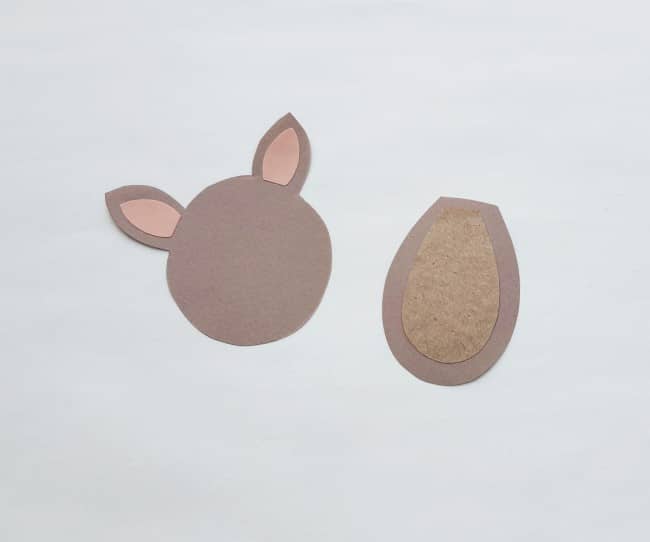
Step 3:
Attach the eyes and nose to the head pattern with glue. Use a sharpie to draw the mouth line of the kangaroo papercraft.
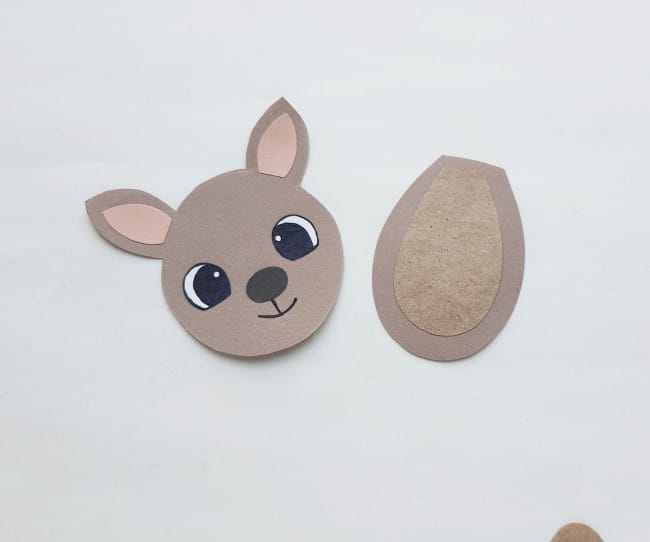
Step 4:
Use glue to attach the lower leg cut-outs on the backside of the lower body pattern, near the bottom side.
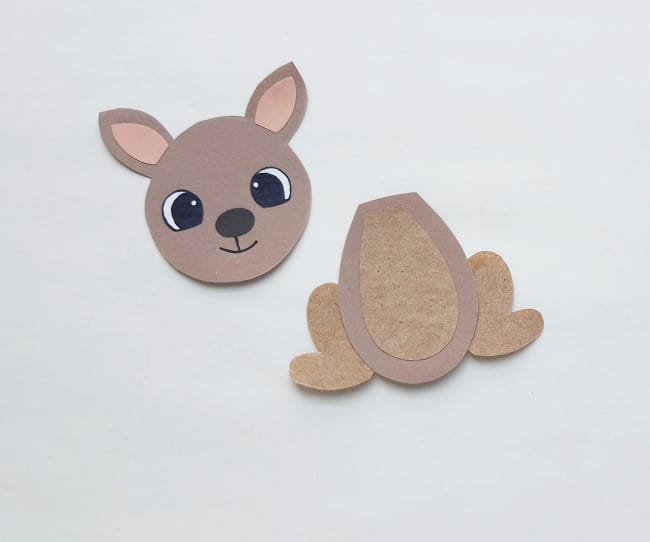
Step 5:
Stick the head pattern onto the top side of the lower body pattern. Your little kangaroo papercraft is starting to come together now!
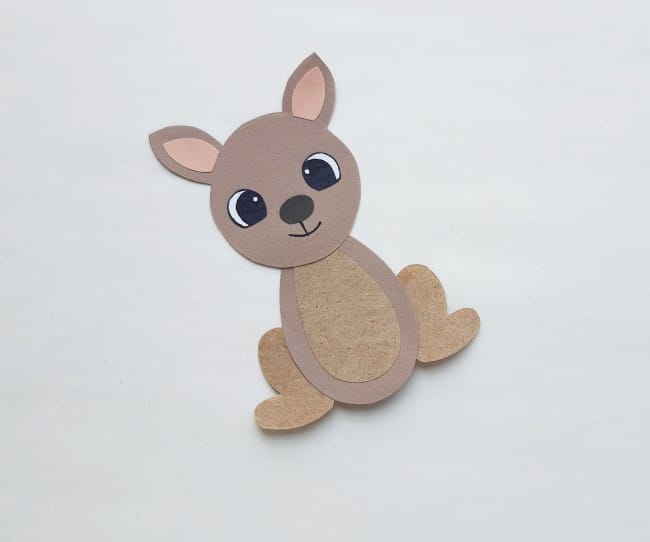
Step 6:
Attach the arm or upper leg cut-outs on both sides of the lower body pattern’s top side. Apply glue only along the border and keep the rest of the arm cut-out free from glue so that we can slide a paper or sheet under it to use it as a bookmark.
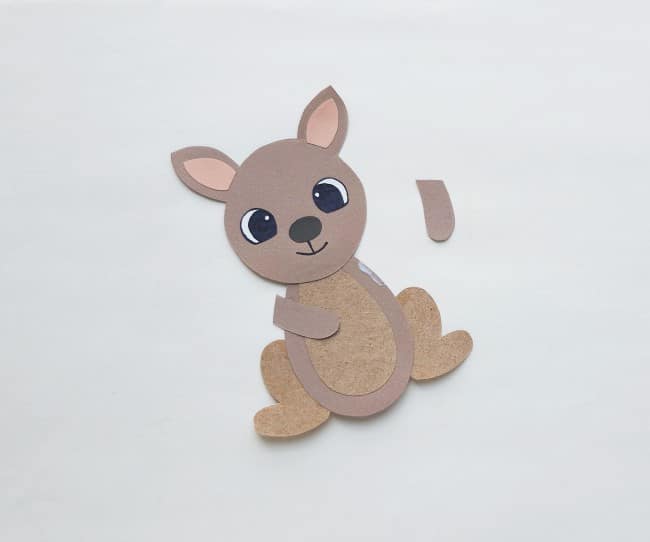
Step 7:
Attach the tail cut-out on either side of the kangaroo pattern, on the underside of the lower body pattern.
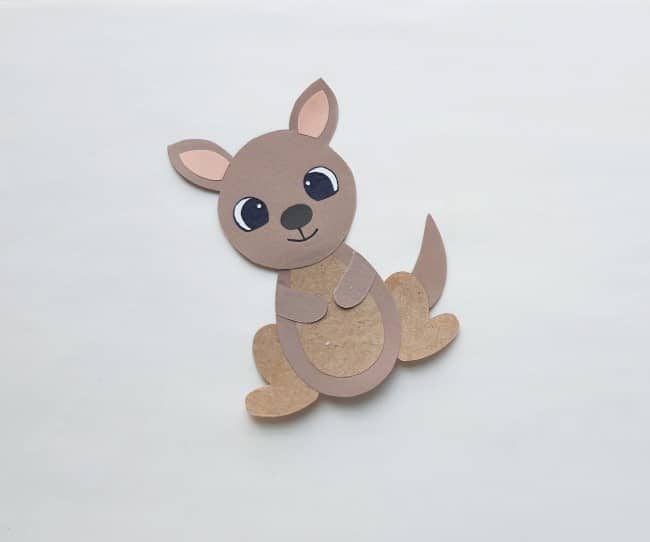
Step 8:
Slide the arm parts of the papercraft kangaroo through a page to use the kangaroo as a bookmark.
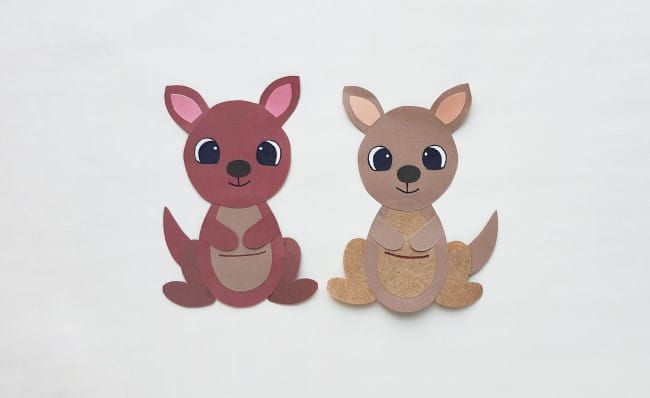
Additional Resources and Other Activities:
Here is a blog post with some fun facts about the Australian food chain.
And for further information about the land down under, you can teach your kids how they celebrate Christmas in Australia!
Another cute Australian animal that is fun to learn about and use in crafts is the koala, and you can do a cute koala craft here.
Check out these summer activities for kids if you’re in search of more to do during the long summer days.
And often in the summer, when the homeschooling isn’t as intensive, you as a homeschool mom might be trying to take on additional cleaning and organizing projects before the next school year begins. If so, this woman’s guide to tackling clutter might be a help.
One thing that often tends to pile up is the many creative and fun projects you do with your children, so here are a few ideas about what to do with your kids’ artwork.
A Few Recommended Books:
And to go hand in hand with your kangaroo papercraft that can also be used as a bookmark, here are some fun books about kangaroos you can read aloud with your kids. Or have them read the storybooks to you for practice!



